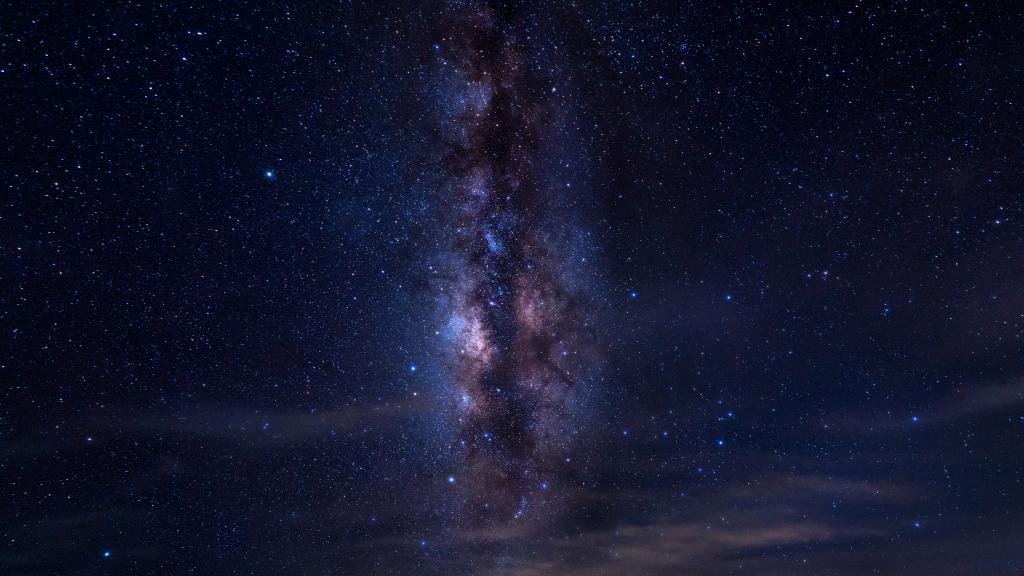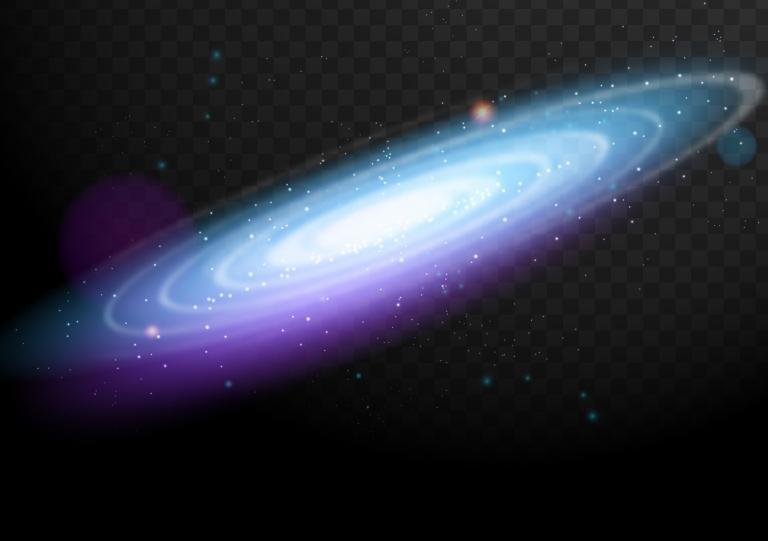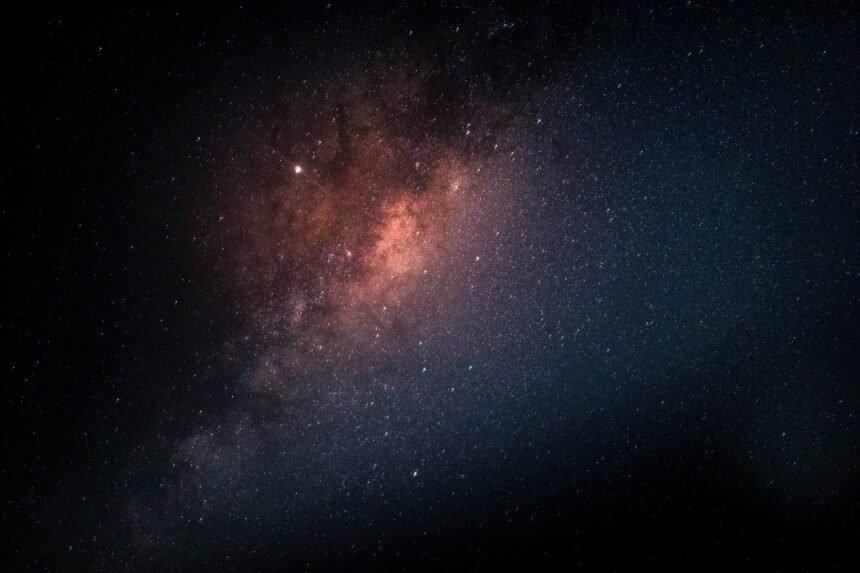Do you ever wonder how many solar systems are in the Milky Way galaxy? Scientists have been trying to answer that question for years. In a new study, they used a computer simulation to estimate the number of solar systems in our galaxy. According to their calculations, there are between 150 million and 240 million solar systems in the Milky way galaxy. So what do these numbers mean for us? And what questions still remain unanswered about our galaxy? Stay tuned for more exciting discoveries about our universe!
It used to be notoriously difficult to study the Milky Way. Astronomers liken the endeavor to trying to describe the size and structure of a forest while lost in the middle of one. We simply lack an overview from our vantage point on Earth. But, since the 1990s, two ground-breaking space telescopes have helped bring in a golden age of Milky Way research. Significant progress has been achieved, particularly after the launch of the Gaia mission by the European Space Agency (ESA) in 2013.
The Milky Way has intrigued humanity for millennia, visible in the night sky (where light pollution permits) as a captivating luminous band of stars and dust. Attempts to map the galaxy may be traced back to Ancient Greece. However, it was not until the 1920s that astronomers understood that the Milky Way is just one of countless galaxies that make up the cosmos.
⫸ What is a galaxy?
A galaxy is a vast cluster of gas, dust, and billions of stars and their solar systems held together by gravity. Earth is one of the planets in our solar system where we reside. Where, on the other hand, is our solar system? It’s a minor component of the Milky Way Galaxy.

A galaxy is a massive clump of gas, dust, and billions of stars with their solar systems. Gravity holds a galaxy together. In the center of our galaxy, the Milky Way, there is also a supermassive black hole.
⫸ Types of the galaxy:
There are many different types of galaxies in our universe. Some are large and diffuse, while others are small and compact. Here is a list of some of the most common types:
1. Spiral galaxy: These galaxies have a spiral shape, with arms that curl around a central bulge. They are usually quite large and contain a lot of gas and dust.

2. Barred spiral galaxy: These galaxies have a spiral shape, with a bar-shaped structure across the center. They are usually large and contain a lot of gas and dust.
3. Elliptical galaxy: These galaxies are shaped like ellipses, and are usually quite large. They contain little gas or dust and have a low rate of star formation.
4. Lenticular galaxy: These galaxies have a lenticular shape, with a central bulge and a disk of stars around them. They are usually small and have a low rate of star formation.
5. Irregular galaxy: These galaxies don’t have any regular shape, and contain lots of gas and dust. They often form when two or more galaxies merge.
6. Active galaxy: These galaxies are very bright, and are thought to be powered by a supermassive black hole at their center. They usually have a lot of gas and dust, and a high rate of star formation.
7. Starburst galaxy: These galaxies are very bright, and are known for their high rate of star formation. They usually contain a lot of gas and dust and may be powered by a supermassive black hole.
8. Dwarf galaxy: These galaxies are small and compact, and contain few stars. They are often found in groups or clusters.
9. S0 galaxies: These galaxies have a round, elliptical shape, and contain very few stars.
10. SB0 galaxies: These galaxies are similar to S0 galaxies, but have a slightly more spiral shape.
11. SA galaxies: These galaxies are similar to spiral galaxies, but have a more elliptical shape.
12. SBa galaxies: These galaxies are similar to barred spiral galaxies, but have a more elliptical shape.
13. Sc galaxy: These galaxies are similar to spiral galaxies, but have a more compact shape.
There are many different types of galaxies in our universe, and each one has its unique characteristics. By understanding more about these different galaxies, we can learn more about the universe as a whole.
⫸ Milky Way Galaxy:
The milky way galaxy is a barred spiral galaxy that is estimated to contain up to 400 billion stars. It is named after the milky white band of light that stretches across it. The milky way galaxy is thought to be around 13.2 billion years old and it is estimated to be 100,000 light-years across. The galactic center is located around 27,000 light-years from Earth and it contains a supermassive black hole. The milky way galaxy is thought to be part of the local group, which also includes the Andromeda galaxy.
◉ Why is the Milky Way called Milky Way?
The Milky Way is named after the Greek goddess Hera, who is said to have spewed milk throughout the sky. Our galaxy is known by many names in different places on the earth. It’s known as the “Silver River” in China and the “Backbone of Night” in the Kalahari Desert in Southern Africa.
◉ Location of Milky Way Galaxy:
Within one of the disk’s four spiral arms, our solar system lies around 27,000 light-years from the galactic center.
◉ Shape & Dimension of Milky Way Galaxy:
The Milky Way is a spiral galaxy with a bar-shaped nucleus surrounded by a 120,000 light-year wide flat disc of gas, dust, and stars.
◉ Structure of Milky Way Galaxy:
This structure is made up of six separate components: a nucleus, a central bulge, a disc (both a thin and thick disc), spiral arms, a spherical component, and a vast halo. Some of these components are virtually indistinguishable.
◉ Star types of Milky Way Galaxy:
From protostars to red supergiants, there are many distinct types of stars in the Universe. They are classified based on their mass and temperature. The spectra of stars can also be used to classify them (the elements that they absorb).
The spectral class of a star, along with its brightness (apparent magnitude), can tell astronomers a lot about it. Stars are divided into seven categories. O, B, A, F, G, K, and M are the temperatures in decreasing order. O and B are unusual in that they are extremely hot and brilliant. M stars are more frequent, colder, and fainter than K stars.
Even though there are scientific causes for the varying hues and sizes of stars, anyone may appreciate this truth by just looking up at the night sky. Some stars (such as Betelgeuse in the constellation Orion) appear warm and orange, while others appear chilly and white (like Vega in the constellation Lyra).
◉ Uniqueness of Milky Way Galaxy:
The brilliant, neighboring satellite galaxies of our Milky Way make it unique. Finally, we are unique by cosmic standards! That is to say, we dwell in a galaxy — the Milky Way, our star island – that is one of only 4% of identical galaxies with brilliant, nearby satellites.
⫸ How many solar systems are in the milky way galaxy?
So, how many solar systems are in the milky way galaxy? Well, researchers have been trying to answer that very question for years and there is still no definitive answer. Estimates range from a few hundred million to a trillion or more, but the true number is likely to be somewhere in between. The problem is that it is very difficult to count the number of stars in the Milky Way, let alone the number of solar systems.
We can only estimate based on what we can see from our vantage point here on Earth. Even with powerful telescopes, we can only observe a tiny fraction of the galaxy. Nevertheless, scientists have made some progress in recent years and we now have a better understanding of how many solar systems there might be.
There is no definitive answer to this question, as it is still unknown exactly how many solar systems are in the Milky Way galaxy. However, recent estimates suggest that there may be as many as 100 billion solar systems in our galaxy alone! This staggering number means that there is a good chance that you live in a solar system located somewhere within the Milky Way galaxy.
So what makes the Milky Way galaxy so special? Well, for starters, it is home to our sun and solar system. The Milky Way galaxy is also incredibly large, measuring an estimated 100,000 light-years across. This means that if you were to travel at the speed of light (which is impossible), it would take you 100,000 years to cross the entire galaxy!
In addition to its size, the Milky Way galaxy is also incredibly rich in stars. It is estimated that our galaxy contains about 400 billion stars, which is more than any other galaxy known to man. This makes the Milky Way one of the most impressive sights in the night sky!
⫸ Will Milky Way and Andromeda merge?
Gravity, in the end, has the final say. In around five billion years, our Milky Way galaxy will collide with the Andromeda galaxy, which is our closest major neighbor. We can’t stop it, but we can forecast what will happen, and we can even see previews by examining other galaxy mergers, due to powerful new telescopes.
⫸ Location of the Earth in the Milky Way Galaxy:
The Milky Way is a spiral galaxy with a huge diameter. The Orion Arm (approximately two-thirds of the way out from the Galaxy’s core) is where Earth is placed in one of the Milky Way‘s spiral arms (named the Orion Arm).
⫸ Conclusion:
How many solar systems are in the milky way galaxy? This is a question that has yet to be fully answered, but we do know that there are billions of them. Scientists have been able to map out our location within the galaxy and have determined that the sun is located about 26,000 light-years from the galactic center and about 2,600 light-years from the Andromeda Galaxy. While much still remains unknown about our galaxy, it’s fascinating to think about all of the stars and planets that make up this immense cosmic structure.
What do you think? Share your thoughts in the comments below and let us know how close you think we are to figuring this out once and for all. In the meantime, astronomers continue to explore our galaxy and learn more about its secrets. Thanks for following along on our journey through the Milky Way!
⫸ FAQs on the milky way galaxy:
Q. What is the Milky Way galaxy?
A. The Milky Way galaxy is a barred spiral galaxy that is around 100,000 light-years in diameter. It contains up to 400 billion stars and is estimated to have up to 100 billion planets.
Q. How did the Milky Way form?
A. The Milky Way formed from the collapse of a giant molecular cloud about 13.6 billion years ago. The cloud was made up of gas and dust and began to spin as it collapsed, forming a disk shape. This spinning disk then began to break up into smaller pieces, which eventually became the stars that we see today.
Q. How many stars are in the Milky Way?
A. There are about 400 billion stars in the Milky Way galaxy.
Q. How many solar systems are in the Milky Way galaxy?
A. There are an estimated 100 billion planets in the Milky Way galaxy. Out of those, there may be billions of Earth-like planets. The number of solar systems in the galaxy is still being determined, but it is estimated to be in the trillions.
Q. How many planets are in the Milky Way?
A. There are about 100 billion planets in the Milky Way galaxy.
Q. What is the temperature of the stars in the Milky Way?
A. The temperature of the stars in the Milky way varies, but on average they are around 6000 Kelvin.
Q. What is the color of the stars in the Milky Way?
A. The color of stars in the Milky way can vary, but they typically emit a yellow-white light.






Alot of good information on this blog, thanks!
Thank you so much for your kind words! I’m glad to know that you’ve found the information on the blog valuable. It’s always encouraging to know that the content is making a positive impact on our readers. If there are any specific topics you’re particularly interested in or if you have any suggestions for future posts, please feel free to share. Your feedback is greatly appreciated and helps us continue to provide relevant and interesting content. Thanks again for your support, and happy reading! 🌟📚🙏
What are the other solar systems in MW like ?
eg just like ours 8 or 9 planets, some with moons ? Or different (eg few or v many planets; few or loads of moons) ?
Is our solar system quite ‘normal’ or unusual ?
Your question touches on a fascinating area of astronomy that delves into the diversity of solar systems within our Milky Way galaxy. The study of exoplanets and their systems has revealed a remarkable variety in the number and types of planets, as well as their moons.
Variety in Planetary Systems: Many discovered solar systems are quite different from ours. Some have very few planets, while others have many. The sizes and types of these planets also vary greatly. For instance, there are systems dominated by gas giants, some with ‘super-Earths’ (rocky planets larger than Earth), and others with very small, Mercury-like planets.
Planetary Orbits: The orbits of these planets can be very different from our solar system. Some exoplanets orbit extremely close to their stars, completing an orbit in just a few days, while others are much farther away. The orbital shapes can also be more elliptical than the relatively circular orbits seen in our solar system.
Moons and Other Features: Regarding moons, our understanding is still developing. Large moons have been detected around some exoplanets, but detailed studies are challenging with current technology. Additionally, some systems may have asteroid belts, cometary clouds, or even interstellar captured objects, much like our own solar system.
Is Our Solar System Normal?: Determining whether our solar system is ‘normal’ or ‘unusual’ is a bit tricky. Early in the exoplanet discovery era, it seemed our solar system might be unusual because many detected systems were very different. However, as detection methods have improved and more planets have been found, we’re beginning to see a wider variety of systems, some of which are more similar to our own. The truth is, there’s a huge diversity out there, and our solar system is just one example of the many ways planetary systems can be arranged.
In summary, the Milky Way is home to a diverse array of solar systems, each with its unique characteristics. Our solar system, with its eight (or nine, depending on who you ask about Pluto!) planets and numerous moons, represents just one possible configuration among a vast sea of possibilities. As our detection methods improve and we discover more exoplanets, our understanding of how typical or atypical our solar system is will continue to evolve.
You may also like: EXPLORING EXOPLANETS: A JOURNEY TOWARDS THE DISTANT WORLDS –